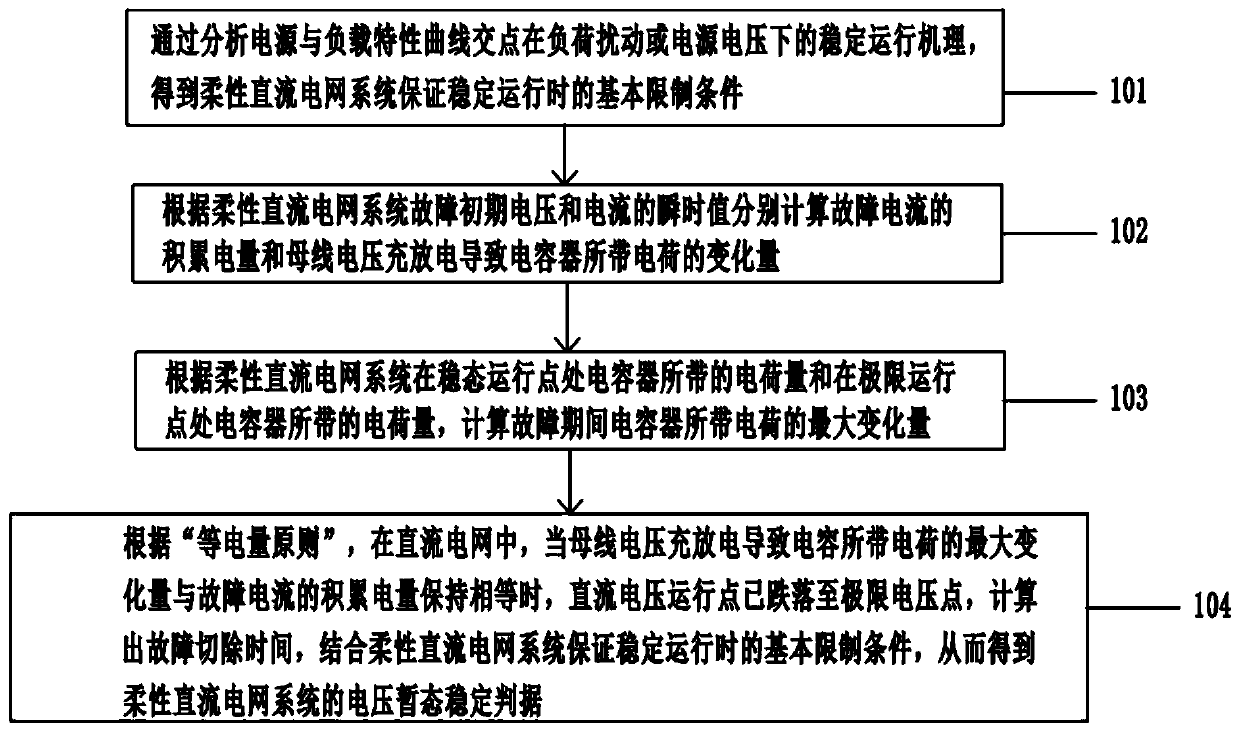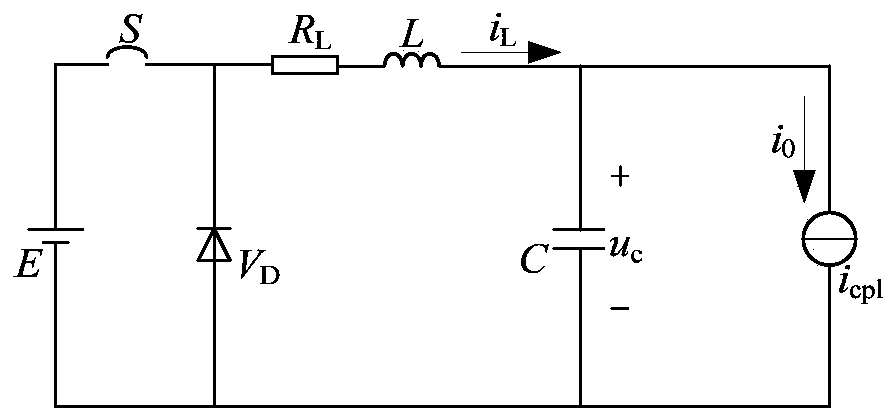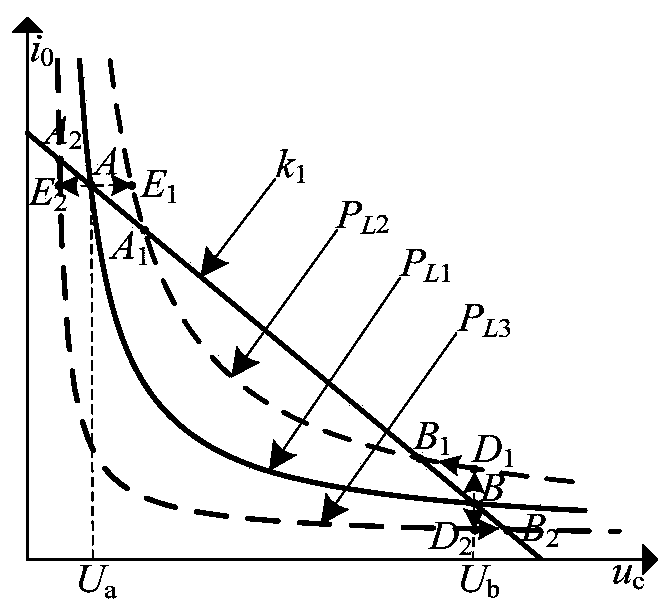Method for determining transient stability criteria of flexible direct current power network under disturbance fault
A flexible DC and transient stability technology, applied in the direction of automatic disconnection emergency protection devices, electrical components, circuit devices, etc., can solve problems such as large fluctuations in DC bus voltage, system safety hazards, and low inertia of flexible DC power grids. Effects of reducing action speed requirements, enhancing transient stability, safety and stable voltage drop margin
- Summary
- Abstract
- Description
- Claims
- Application Information
AI Technical Summary
Problems solved by technology
Method used
Image
Examples
Embodiment 1
[0124] The present invention builds such as in Matlab / Simulink environment Figure 8 The simulation model of the two-terminal flexible DC grid is shown. On the power supply side, the power frequency three-phase AC power supply is filtered and transformed, and then connected to the VSC1 converter to connect to the DC power grid. The voltage at both ends of the parallel capacitor C represents the DC bus voltage. On the load side, the duty ratio of the converter VSC2 is adjusted to ensure that the connected load exhibits constant power characteristics. The basic parameters of the simulation model are shown in Table 1.
[0125] Table 1 Basic parameters of flexible DC grid
[0126]
[0127] Combined with the basic parameters of the flexible DC grid in Table 1, according to the theoretical formulas (7) and (8), the theoretical stable operating parameters of the system in this example are shown in Table 2.
[0128] It can be seen from Table 2 that the stable operating voltage o...
Embodiment 2
[0136] When the present invention operates stably with an initial load of 20kW under the drooping control of the DC bus voltage, the stable operating voltage is 498V. When the load changes suddenly at 0.05s, the response result is as follows Figure 10 shown.
[0137] When the load increases from 20kW to 25kW in 0.05s, as shown by the red line in the figure, the upward shift of the load characteristic curve leads to a change in the stable operating point of the system, and a new stable operating state is established after the DC bus voltage drops to 486V. After the load drops from 25kW to 10kW in 0.15s, the DC bus voltage rises to 506V to re-establish a stable operating state, as shown in Figure 10 (b) The DC system bus voltage is shown. It can be seen that when the system load power changes and the DC bus voltage fluctuates within the allowable range, it can still operate stably at the new voltage operating point in the end. Figure 10 (a) is the DC system load power.
...
Embodiment 3
[0140] The initial operating state of this example is the same as that of Example 2. The power supply voltage drops from 730V to varying degrees at 0.05 seconds. After the power supply is restored, the response results are as follows Figure 11 shown.
[0141] When the power supply suffers from four different levels of voltage drops in 0.05s, the power supply disturbance is recovered in 0.06s, and the response results of the system are as follows: Figure 11 shown. The power supply voltage drops, the capacitor discharges, and the DC bus voltage drops rapidly from 498V. Figure 11 From the curves 1, 2 and 3, it can be seen that the bus voltage of the system dropped to 420V, 343V and 338V respectively in 0.06s. With the elimination of the disturbance, the systems in curves 1 and 2 resumed stable operation, and the system in curve 3 operated stably at 350V. 4. After the power supply voltage drops, the DC bus voltage drops below 338V in 0.06s, and finally shows a trend of instab...
PUM
 Login to View More
Login to View More Abstract
Description
Claims
Application Information
 Login to View More
Login to View More - R&D
- Intellectual Property
- Life Sciences
- Materials
- Tech Scout
- Unparalleled Data Quality
- Higher Quality Content
- 60% Fewer Hallucinations
Browse by: Latest US Patents, China's latest patents, Technical Efficacy Thesaurus, Application Domain, Technology Topic, Popular Technical Reports.
© 2025 PatSnap. All rights reserved.Legal|Privacy policy|Modern Slavery Act Transparency Statement|Sitemap|About US| Contact US: help@patsnap.com



